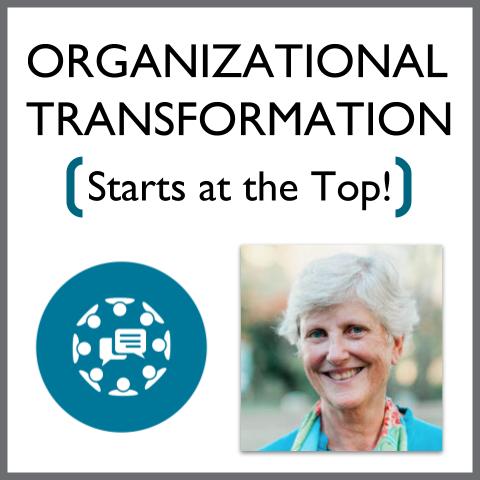Organizational transformation starts at the top!


Leaders often face challenges and pressures that may prevent them from taking the necessary actions for organizational change. Chief executives in the public sector can be especially vulnerable when powerful unions and political maneuverings make change risky. No wonder leaders are hesitant to embark on such a perilous journey.
There are many frameworks and tools for understanding and implementing organizational change. The hardest part for many well-intentioned leaders is the question of where to start? When leaders are committed to leading transformation of their organization in a way that is not cosmetic or marginal, here are some things that they may consider:
Help their direct reports to help those below them stop judging and start helping each other. This is easier said than done because not only do we seem to be hardwired to judge, it is easy to forget how important it is to come into any situation or discussion with a commitment to inquiry. Can members of a team confront each other when their behavior departs from the behaviors they demand from others? Can they admit their mistakes or hesitance, acknowledge that there are things they may not fully know or understand? Can they use their collective brainpower and experience to support and complement each other—so that leaders can speak with a unified voice?
Increase psychological safety, a precondition for trust. We hear a lot about trust building but trust is not something that can be “built”—increasing trust in an organization is not a construction project! Trust is a consequence of people behaving differently towards each other over time, being willing to suspend judgment, start acting as if there is something of great value in what a colleague says. Maybe at first they don’t really believe that, but one day they may find themselves surprised and find treasures in what others say.

Speak directly to the direct reports of one’s direct reports (skip level) to solicit their input about how to improve relationships and the prevailing corporate culture and what skills they need to develop to do so (and then support the development of such skills). Most people want to thrive at work and stop the sapping of energies in petty battles. For the direct reports of a chief executive and the skip level this is a tall order. Many people in senior management and leadership positions often were promoted into their current position because of technical competence or good connections or both, not because of their emotional intelligence or having taught themselves to be excellent managers and inspiring leaders [see Managers Who Lead: A Handbook for Improving Health Services developed by Management Sciences for Health].
Pay attention to stress levels, their own and their employees. Leaders are first and foremost human beings. I don’t know of any human being who is immune to the effects of stress. Stress gets in the way of psychological safety and the development of trust or team cohesion which then gets in the way of efficiency in producing intended results. Stress affects the functioning of our prefrontal cortex, our premier organ for good decision making.
Recognize processes that help or hinder achieving objectives, strengthen the former, fix the latter. There was a time that process was considered a fuzzy concept, getting in the way of a focus on results. Luckily, the tide has turned and most people realize that process matters. Good process makes intended results possible. Poorly thought out processes hamper producing intended results. No organizational (and professional and personal) success can be achieved without good processes (for planning, for decision making, for budget allocations, for talent deployment, etc). Successful change efforts do not happen simply because we wish, but because those at the top see what is needed and take actions that allow others to follow suit, creating a chain reaction of large or small positive changes that add up to create the new reality
Coaching can be of great benefit to an organization by helping its leaders to try on any of the behaviors listed above. External coaches (and often internal coaches as well) are most often used for executives or directors. They can establish psychological safety necessary for trust, so skills can be developed, confidence increased and learning take place. But managers and team leaders can also become coaches and help team leaders and managers further down the hierarchy implement transformation strategies that are less likely to backfire, create resistance, or raise skepticism. Coaches can help their clients develop realistic benchmarks with clear measures of what success might look like. With some patience and good guidance, effective transformation will happen.
About the Author

After working for Management Sciences for Health (MSH) for over 30 years, Sylvia Vriesendorp is currently an independent consultant. She was one of the principal developers of MSH’s innovative leadership development programs and the author or co-author of several MSH publications related to leadership development. She earned her coaching credentials from the Institute of Professional Excellence in Coaching and is certified by the International Coach Federation. Over the last few years she has studied the neuroscience of coaching and has been certified as a Conversational Intelligence™ coach. Her consulting and coaching clients range from a large established organization, to several USAID projects and a young startup in Zambia. In addition to her consulting and coaching practice she has also taught two online MBA courses on leadership and negotiation at Simmons University.





These are great considerations for leaders embarking on organizational change; thank you Sylvia.
What role do you see these considerations playing outside of a discrete change initiative?
In my mind, if these things are prioritized on an ongoing basis, they can help create a more conducive environment for change. For example, a long-term focus on building relationships may enable more successful changes than introducing this relationship building at the start of a change initiative.